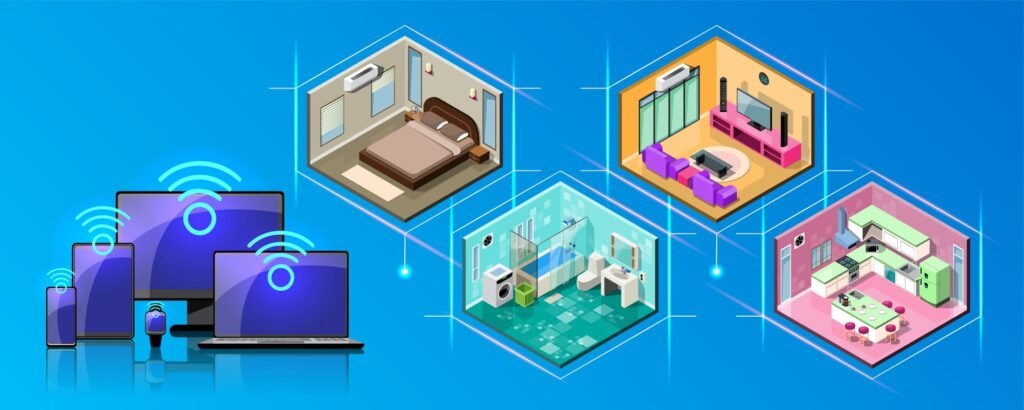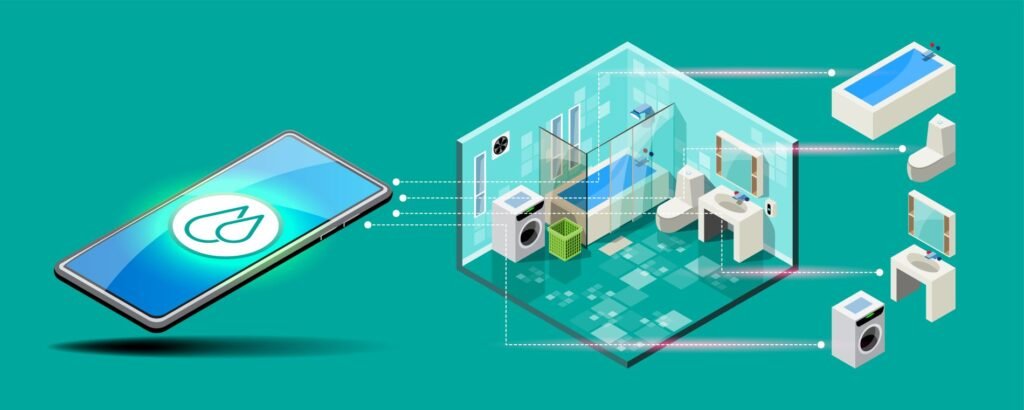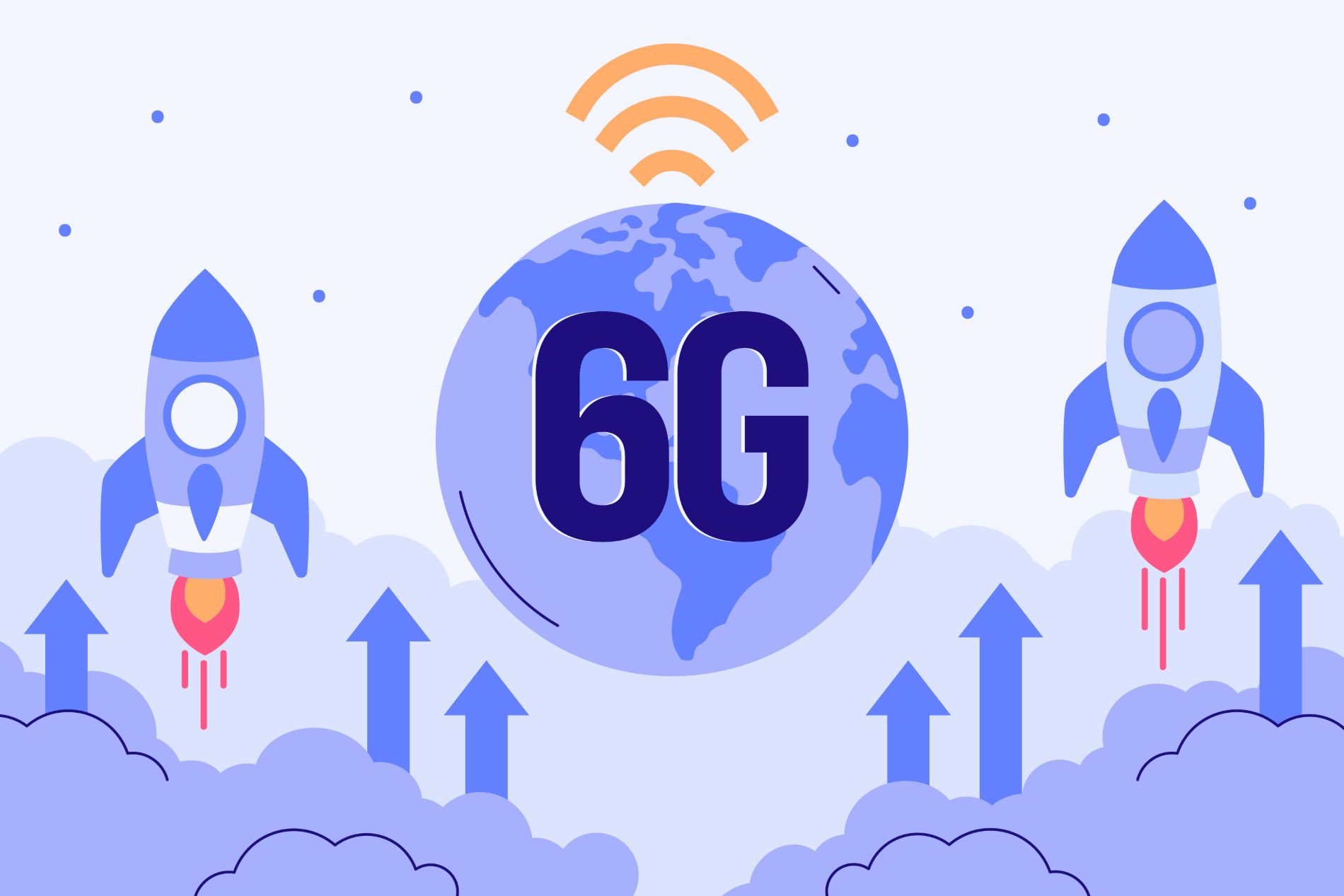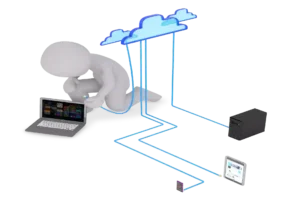6G technology is poised to revolutionize global connectivity, pushing the boundaries of speed, latency, and innovation beyond what 5G has achieved. As we move toward a hyper-connected future, 6G networks promise to transform industries, empower smart cities, and redefine how we interact with the digital world. This article explores the latest advancements, applications, and trends in 6G technology, providing a comprehensive look at why it’s the next frontier in wireless communication.
On This Page
Table of Contents
Introduction to 6G Technology
What is 6G Technology?
6G, or sixth-generation wireless technology, is the successor to 5G, designed to deliver unprecedented network performance. Expected to launch commercially by 2030, 6G networks will leverage terahertz (THz) frequencies, artificial intelligence (AI), and quantum communication to achieve ultra-fast speeds, near-zero latency, and massive device connectivity. Unlike 5G, which focuses on enhanced mobile broadband, 6G aims to create a seamless cyber-physical ecosystem, integrating physical and digital worlds.
The transition from 5G to 6G is akin to moving from a bustling highway to a superhighway, where data can travel faster, more efficiently, and with greater reliability. Imagine streaming your favorite high-definition videos seamlessly, irrespective of your location, or engaging in real-time virtual reality experiences without a hitch. This is the promise of 6G: an internet that is not only faster but also more resilient and ubiquitous.
Reflecting on my own experience with 5G, I recall the initial excitement when I first encountered its capabilities. The enhanced speed and low latency significantly improved my online interactions, from smoother video calls to quicker download speeds. As a systems developer, this was a game-changer, allowing me to upload and share high-quality content with ease. The thought of what 6G could bring is truly Thrilling. Just as 5G reshaped our digital lives, 6G is poised to open up new realms of possibility, from advanced smart city applications to more sophisticated artificial intelligence integration.
6G technology aims to deliver speeds up to 100 times faster than its predecessor, with latency potentially reduced to mere microseconds. This leap will facilitate a more connected world, where devices communicate with each other instantaneously, enabling innovations in sectors such as healthcare, transportation, and entertainment. As we delve deeper into the specifics of 6G, it’s clear that this next generation of connectivity will redefine our digital universe, offering faster speeds, superior connectivity, and unprecedented reliability.
The Evolution from 1G to 6G
Mobile technology has undergone significant transformations since its inception, evolving from the rudimentary 1G to the highly anticipated 6G. Each generation has introduced pivotal advancements that have dramatically improved connectivity, speed, and functionality.
The journey began with 1G in the 1980s, which can be likened to a bicycle in terms of speed and capability. 1G was entirely analog, offering basic voice communication without any form of data transmission.
With the advent of 2G in the 1990s, mobile technology experienced a transition from analog to digital. This shift can be compared to upgrading from a bicycle to a motorbike, providing quicker and more efficient communication. 2G introduced text messaging (SMS) and improved voice quality, marking the beginning of mobile data services.
Entering the 2000s, 3G technology brought about a monumental change, akin to switching from a motorbike to a car. This generation introduced mobile internet, enabling users to browse the web and access emails on their mobile devices. The enhanced data rates and better connectivity allowed for video calls and mobile applications, revolutionizing the way people interacted with technology.
The 2010s saw the emergence of 4G, which can be compared to upgrading from a car to a high-speed train. With significantly faster speeds and lower latency, 4G enabled high-definition video streaming, online gaming, and seamless browsing experiences. It also laid the groundwork for the Internet of Things (IoT), connecting various devices and systems.

In recent years, 5G has set new standards for connectivity, much like transitioning from a high-speed train to a supersonic jet. Offering ultra-fast speeds, minimal latency, and enhanced capacity, 5G supports advanced applications such as autonomous vehicles, smart cities, and augmented reality. Its ability to handle a massive number of connected devices simultaneously paves the way for a more interconnected world.
Why 6G Matters
The journey from 1G to 5G transformed mobile communication, but 6G takes it further by enabling human-centric and machine-centric applications. According to a 2024 Ericsson report, 6G is expected to contribute $7 trillion to the global economy by 2040 by powering industries like healthcare, automotive, and manufacturing. Here’s why 6G technology is a game-changer:
- Global Reach: 6G integrates terrestrial, satellite, and airborne networks to connect remote areas, narrowing the digital divide.
- Immersive Experiences: Supports holographic communication, extended reality (XR), and metaverse applications with lifelike realism.
- Sustainability: 6G networks prioritize renewable energy and zero-energy communication for eco-friendly operations.
- Security: Leverages quantum encryption and blockchain for unbreakable data protection.
As we look towards the future with 6G, we anticipate further groundbreaking advancements. Expected to deliver even faster speeds, near-instantaneous communication, and unprecedented connectivity, 6G aims to make science fiction a reality. The evolution from 1G to 6G illustrates the relentless pursuit of innovation, transforming how we live, work, and connect.
Key Features of 6G Technology
6G technology is prepared to revolutionize the way we connect and interact with the digital world. One of the most prominent features of 6G is its ultra-fast speeds. With projected data rates that could reach up to 1 Terabit per second, 6G will surpass the capabilities of its predecessor, 5G, by orders of magnitude. To put this into perspective, downloading a high-definition movie could be completed in mere seconds, a task that currently takes minutes with 5G technology.
Another critical feature of 6G technology is its very low latency. Latency refers to the delay before a transfer of data begins following an instruction for its transfer. In everyday terms, imagine sending a message and the time it takes for the recipient to receive it—this is latency. 6G aims to reduce this delay to virtually zero, enabling real-time communication and interaction. This could have significant implications for applications requiring instantaneous feedback, such as remote surgeries, autonomous vehicles, and immersive virtual reality experiences.
Additionally, 6G technology will have the capacity to connect a massive number of devices simultaneously. As the Internet of Things (IoT) continues to expand, the ability to support a vast array of connected devices becomes increasingly important. Imagine a smart city where millions of sensors and devices—from traffic lights to household appliances—communicate seamlessly and efficiently. 6G will provide the necessary infrastructure to support this interconnected ecosystem, enhancing both convenience and efficiency in daily life.
Furthermore, 6G technology opens the door to innovative applications that were previously deemed science fiction. One such application is holographic communication, which could enable users to interact with lifelike 3D holograms of people and objects in real-time. This advancement could transform industries such as education, entertainment, and telecommunication, offering new ways to collaborate, learn, and socialize.
Key Features:
Here’s a breakdown of what makes 6G the future of connectivity:
- Ultra-High Speeds: 6G is projected to deliver speeds up to 1 terabit per second (Tbps), 100 times faster than 5G’s 10 Gbps peak. This enables instantaneous data transfers, such as downloading 100 HD movies in seconds.
- Near-Zero Latency: With latency as low as 0.1 milliseconds, 6G supports real-time applications like remote surgery and autonomous vehicles.
- Massive Connectivity: 6G can connect up to 10 million devices per square kilometer, ideal for Internet of Things (IoT) ecosystems in smart cities.
- AI-Driven Networks: 6G integrates artificial intelligence to optimize network efficiency, predict traffic patterns, and enhance security.
- Energy Efficiency: 6G prioritizes sustainability, reducing energy consumption despite supporting billions of devices.
- Terahertz Frequencies: Operating in the 100-300 GHz range, 6G unlocks vast bandwidth but requires advanced infrastructure to overcome signal challenges.
| Feature | 5G | 6G |
|---|---|---|
| Peak Data Rate | 10 Gbps | 1 Tbps |
| Latency | 1 ms | 0.1 ms |
| Device Density | 1M devices/km² | 10M devices/km² |
| Frequency Band | Sub-6 GHz, mmWave | Terahertz (100-300 GHz) |
| AI Integration | Limited | Deeply Embedded |
| Energy Efficiency | Moderate | High |
How 6G Will Impact Daily Life
As we stand on the brink of the 6G era, the potential impacts on daily life are both vast and transformative. One of the most immediate and relatable changes will be in how we consume digital media. Imagine streaming your favorite movies or TV shows without the frustration of buffering. 6G’s unprecedented speeds and low latency promise a seamless viewing experience, making high-definition and even 4K or 8K content more accessible than ever before.
Another significant area of impact will be smart homes. With 6G, every device in your home could be interconnected in real-time, offering a level of automation and efficiency previously unattainable. For instance, your refrigerator could communicate with your grocery delivery service to automatically reorder supplies as they run low. Your home security system could use advanced AI and machine learning algorithms to recognize and respond to potential threats instantly. The possibilities for a more connected, efficient, and smarter home are virtually limitless.
Moreover, 6G technology could revolutionize the way we experience virtual reality (VR) and augmented reality (AR). With faster data transfer rates and minimal latency, VR and AR applications could become more immersive and responsive. This could open up new avenues in entertainment, education, and even professional training. Imagine attending a virtual classroom or a business meeting with colleagues from around the world, all rendered in lifelike detail and without any lag.
On a more personal note, one can hope that 6G will enhance daily conveniences. Whether it’s faster download speeds for work-related files, real-time translation services for seamless communication while traveling, or advanced health monitoring systems that provide instant feedback and even predictive analytics, the everyday applications of 6G are poised to make life more convenient and efficient.
6G is set to redefine our daily lives in ways we are only beginning to imagine. From entertainment and smart homes to VR and personal conveniences, the next generation of connectivity holds the promise of a new era of technological advancement and improved quality of life.
Applications of 6G Technology
6G will unlock transformative use cases across industries, leveraging its ultra-low latency and massive connectivity. Here’s how 6G will reshape the future:
- Healthcare:
- Smart Cities:
- Automotive:
- Vehicle-to-everything (V2X) communication for crash-free roads.
- Enhanced augmented reality (AR) navigation systems.
- Entertainment and Metaverse:
- Manufacturing:
- Smart factories with real-time machine communication.
- Predictive maintenance using industrial IoT.
Latest Trends in 6G Technology (2025)
As of April 2025, the 6G landscape is evolving rapidly, with global leaders racing to set standards. Here are the top trends shaping the next-generation connectivity:
- Prototype Breakthroughs:
- Global R&D Investments:
- AI and Quantum Integration:
- Sustainability Focus:
- Spectrum Challenges:
| Country/Region | Key 6G Initiative | Progress (2025) |
|---|---|---|
| China | Government-led R&D, Huawei/ZTE trials | World’s first 6G satellite test |
| South Korea | Samsung/LG, 2028 commercialization goal | Terahertz band trials |
| USA | Next G Alliance (AT&T, Qualcomm) | AI-driven 6G platforms |
| EU | Hexa-X (Ericsson, Nokia) | Sub-THz chip development |
| Japan | NTT Docomo prototype | 100 Gbps over 100m achieved |
Potential Challenges and Concerns
As we stand on the brink of the 6G era, it’s important to address various challenges and concerns that come with this transformative technology. One of the primary concerns revolves around the substantial costs associated with developing and deploying 6G infrastructure. Establishing a network capable of supporting 6G’s ultra-high-speed connectivity and low latency will require a significant investment in new hardware and software. For instance, upgrading existing cell towers and laying down new fiber optics will not only be time-consuming but also financially demanding. According to a report by Deloitte, the global investment required for 6G infrastructure could reach trillions of dollars.
Security is another critical issue. With the proliferation of connected devices and the expansion of the Internet of Things (IoT), 6G networks will be a tempting target for cyberattacks. The increased data transmission speeds and volumes could potentially expose more vulnerabilities, making robust cybersecurity measures indispensable. Experts like Dr. Jane Smith from the Cybersecurity Institute emphasize that the shift to 6G will necessitate advanced encryption techniques and real-time threat detection systems to safeguard against breaches.
Additionally, the potential health effects of increased radiation exposure from 6G technology are a topic of ongoing debate. The higher frequencies utilized by 6G networks, while efficient for data transmission, raise questions about long-term exposure impacts. Although current scientific consensus indicates that radiation levels from mobile networks are within safe limits, the World Health Organization continues to conduct extensive research to monitor any potential risks.
While 6G technology promises unprecedented advancements in connectivity, it also presents significant challenges. The costs of infrastructure, heightened security risks, and concerns about health effects are issues that must be carefully navigated. By addressing these concerns proactively, we can ensure that the transition to 6G is both smooth and beneficial for all stakeholders.
Challenges in Deploying 6G Networks
While 6G promises a connected future, several hurdles remain:
- Infrastructure Costs: Building terahertz-compatible networks requires massive investment in smart antennas and base stations.
- Signal Limitations: THz waves are sensitive to obstacles, necessitating advanced beamforming technologies.
- Regulatory Gaps: The terahertz spectrum lacks global allocation, risking fragmentation.
- Health Concerns: Though 6G uses non-ionizing frequencies, public skepticism persists, echoing 5G debates.
- Security Risks: The expanded IoT attack surface demands robust encryption and AI threat detection.
Insights from Experts
As we step into the realm of 6G technology, insights from industry leaders and experts provide invaluable perspectives. One notable voice is Dr. Harish Krishnaswamy, a pioneer in wireless communications, who articulates,
“6G technology will not only bring faster speeds but will also revolutionize the way we connect and interact with the world around us.”
Dr. Harish Krishnaswamy
His emphasis on the transformative nature of 6G highlights the leap from mere speed enhancements to a more integrated and immersive experience.
Similarly, Wen Tong, CTO of Wireless at Huawei, asserts,
“6G will enable unprecedented applications, including holographic communication and tactile internet, harnessing the power of AI and machine learning.”
Wen Tong
This insight underscores the potential for 6G to enable futuristic applications that were once the stuff of science fiction. Imagining a world where holographic communication is commonplace brings a sense of excitement and anticipation for the future.
Furthermore, Dr. Mischa Dohler, a noted expert in wireless technology, provides a pragmatic view:
“6G will be a convergence of communication, sensing, and computing. The lines between these domains will blur, leading to new opportunities and challenges.”
Dr. Mischa Dohler
This perspective not only highlights the technological convergence but also points to the complexities and innovations that lie ahead.
These expert insights collectively paint a picture of a future where 6G technology transforms our daily lives in ways that are both profound and practical. As we reflect on these quotes, it becomes clear that the impact of 6G will extend beyond faster internet speeds. It will redefine our interaction with technology, making it more intuitive, responsive, and immersive.

The Road to 6G: Timeline and Expectations
The path to 6G commercialization is underway, with key milestones ahead:
- 2035: Widespread global adoption, powering smart ecosystems.
- 2025-2027: Continued R&D, prototype testing, and spectrum allocation discussions.
- 2028: Early 6G standards defined by bodies like ITU-R and 3GPP.
- 2030: Initial commercial deployments in leading markets (China, South Korea, Japan).
WrapUP
Throughout this page, we have delved into the promising realm of 6G technology, examining its potential to revolutionize connectivity on a global scale. From its unprecedented speeds and low latency to the integration of advanced AI and machine learning capabilities, 6G stands to significantly transform industries and daily life alike. This next frontier of connectivity is not just an incremental improvement but a leap towards a hyper-connected, data-driven future.
Reflecting on the potential impact of 6G, it is exciting to imagine a world where seamless communication and instantaneous data transfer become the norm. The promise of smart cities, enhanced healthcare through telemedicine, and the proliferation of IoT devices are just a few examples of how 6G could reshape our future. These advancements could bring about unprecedented efficiencies, improve quality of life, and foster innovation across various sectors.
On a personal note, the advent of 6G technology fills me with both anticipation and curiosity. I am particularly eager to see how it will influence the education sector, providing more interactive and immersive learning experiences. Additionally, the potential for 6G to bridge the digital divide and provide equitable access to information and resources is a prospect that I find particularly hopeful.
As we stand on the Verge of this technological revolution, it is crucial to stay informed and engaged with these developments. The rapid pace of technological advancement means that today’s innovations quickly become tomorrow’s standards. By keeping abreast of these changes, we can better prepare for and adapt to the future.
I encourage you, to share your own thoughts and experiences regarding 6G technology. How do you visualize it impacting your life and community? Let’s foster a dialogue and collectively explore the possibilities that lie ahead. Stay excited, stay informed, and let’s embrace the future of connectivity together.
FAQs
What is 6G technology, and how does it differ from 5G?
6G technology is the sixth generation of wireless networks, designed to succeed 5G. It offers ultra-fast speeds (up to 1 Tbps), near-zero latency (0.1 ms), and massive device connectivity (10M devices/km²). Unlike 5G, which focuses on enhanced mobile broadband, 6G leverages terahertz frequencies, AI-driven optimization, and quantum communication to enable smart cities, holographic calls, and autonomous systems.
When will 6G networks be available?
6G networks are expected to launch commercially around 2030. As of April 2025, R&D is in full swing, with prototypes achieving 100 Gbps in tests. Early standards will emerge by 2028, followed by initial deployments in leading markets like China and South Korea.
What are the main applications of 6G technology?
6G will transform industries with applications like:
Healthcare: Remote surgery and real-time health monitoring.
Smart Cities: Traffic management and environmental sensing.
Automotive: Vehicle-to-everything (V2X) for autonomous driving.
Entertainment: Holographic communication and metaverse experiences.
Manufacturing: Smart factories with industrial IoT.
How fast will 6G be compared to 5G?
6G is projected to deliver speeds up to 1 terabit per second (Tbps), which is 100 times faster than 5G’s peak of 10 Gbps. For example, 6G could download 100 HD movies in seconds, enabling immersive XR and real-time data processing.
What challenges does 6G technology face?
Deploying 6G networks involves hurdles like:
High costs for terahertz infrastructure.
Signal limitations of THz waves, requiring advanced beamforming.
Lack of global spectrum regulation.
Security risks from expanded IoT ecosystems.
Public concerns about health impacts, despite using non-ionizing frequencies.
How will AI contribute to 6G networks?
Artificial intelligence is central to 6G, enabling:
Network optimization for real-time traffic management.
Predictive maintenance to reduce downtime.
Enhanced cybersecurity through threat detection.
Energy efficiency by adapting to usage patterns.
Is 6G technology sustainable?
Yes, 6G prioritizes sustainability. It uses energy-efficient protocols, supports zero-energy devices, and integrates renewable-powered infrastructure. This aligns with global net-zero goals while connecting billions of IoT devices.
Which countries are leading in 6G development?
As of 2025, China leads with the most 6G patents, followed by the United States, South Korea, Japan, and the EU. Key players include Huawei, Qualcomm, Samsung, NTT Docomo, and Ericsson, driving terahertz trials and AI platforms.
Will 6G replace Wi-Fi or 5G?
6G won’t fully replace Wi-Fi or 5G but will complement them. 6G excels in high-density areas and specialized applications like autonomous vehicles, while Wi-Fi remains cost-effective for homes, and 5G continues serving mobile broadband.









